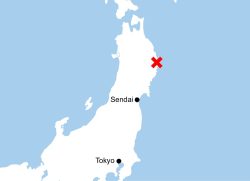Water Supply Outages during Disasters: Means of Securing Water Must Be Diversified
14:59 JST, September 15, 2024
To be prepared for water outages during disasters such as earthquakes, it is important to have ways to secure water from sources other than the main water supply.
These include administrative bodies having advance knowledge of the locations of wells and other water sources owned by residents and making use of them in times of emergency.
In the Noto Peninsula Earthquake in January, aging water pipes were damaged one after another. Severed roads stopped workers from accessing damaged areas to carry out repairs, and water service was cut off for a long time. This hindered the work of evacuation centers and the rebuilding of the lives of those affected.
Amid this situation, wells owned by residents were opened and made available to the local community in some affected areas. Even if the water pumped up was not suitable for drinking, it was useful for daily life, such as for toilets and washing clothes.
In the event of a major earthquake, such as the one feared to occur directly beneath the Tokyo metropolitan area or the Nankai Trough earthquake, it is believed that there will be a large-scale water outage. It is urgent to work on water pipes to make them earthquake-resistant in various areas, but this will take both time and money.
In addition to improving facilities, such as making school swimming pools earthquake-resistant and using them as storage tanks for alternative water sources, it is also important to create a system for using well water and spring water.
Many local governments have included provisions in their disaster preparedness plans to use groundwater, such as well water, in the event of a disaster.
In fiscal 1995, the city of Yokohama implemented a system to designate wells and other water sources as “disaster emergency response wells” with the owners’ consent for use in the event of a disaster. According to the city, nearly 2,000 wells have already been designated throughout Yokohama.
The city of Sendai also began a similar program in fiscal 2000. Wells were used as a water source during the water outage that occurred after the Great East Japan Earthquake in 2011.
In August, the government clearly stated in the revised Basic Plan on Water Cycle its policy of promoting the use of groundwater, such as well water, as an alternative water source in the event of a large-scale disaster. The government is also said to be planning to create guidelines that include ways for coordinating with well owners when registering or designating wells for emergency use.
There have been cases in which municipalities have decided to use wells, but they have not coordinated in advance with the owners of the wells about how to use them in the event of a disaster. The central government should not only introduce administrative procedures but also provide examples of past use.
If there are not enough existing wells, digging new ones near evacuation centers should be considered. There may be cases in which using rivers or ponds is effective. It is essential that each local government secures water sources that match the local situation.
It is also necessary to make residents aware of this information. An environment should be created where finding wells is easy during an emergency, such as by displaying signs showing the location of wells and including locations in hazard maps.
(From The Yomiuri Shimbun, Sept. 15, 2024)
"Editorial & Columns" POPULAR ARTICLE
-

Artificial Intelligence Expands Possibilities for Foreign Language Learners
-

Build Intellectual, Physical Strength, As Well As Communicative Power / Japan Should Move from Beneficiary to Shaper of World Order
-

Global Economy in Turmoil: Prevent Free Trade System from Going Adrift / Risks to Financial Markets Must Be Heeded
-

Japan-China Strain Set to Persist as Beijing Officials Self-Interestedly Bash Tokyo; Takaichi Unlikely to Back Down
-

French and German Ambassadors to Japan Call for Democracies to Unite in Defense against Russian Disinformation
JN ACCESS RANKING
-

As Chinese Tourists Shun Japan, Hotels and Stores Suffer
-

Osaka-Kansai Expo’s Economic Impact Estimated at ¥3.6 Trillion, Takes Actual Visitor Numbers into Account
-

Japan Govt Adopts Measures to Curb Mega Solar Power Plant Projects Amid Environmental Concerns
-

BOJ Gov. Ueda: Highly Likely Mechanism for Rising Wages, Prices Will Be Maintained
-

Economic Security Panels Debate Supply Chains, Rare Earths; Participants Emphasize Importance of Cooperation Among Allies





















